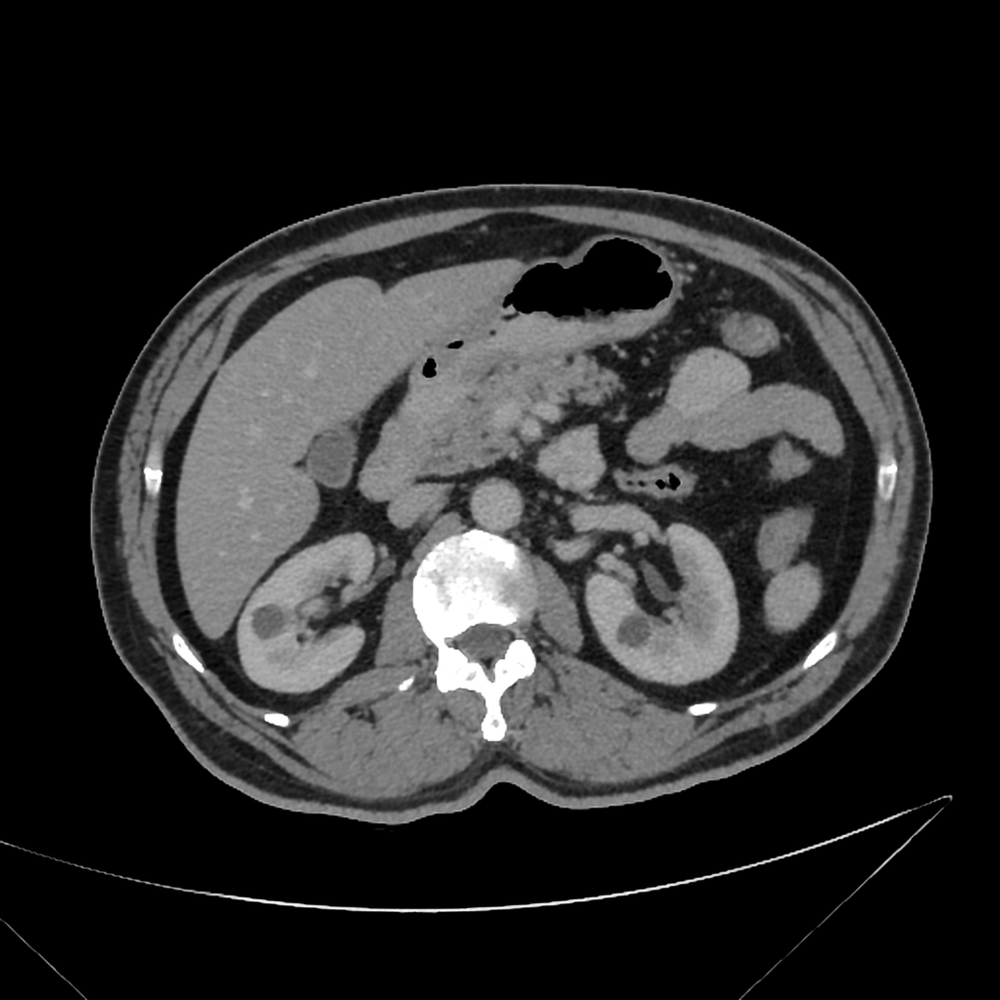Insulinoma CT
|
Insulinoma Microchapters |
|
Diagnosis |
|---|
|
Treatment |
|
Case Studies |
|
Insulinoma CT On the Web |
|
American Roentgen Ray Society Images of Insulinoma CT |
Editor-In-Chief: C. Michael Gibson, M.S., M.D. [1]; Associate Editor(s)-in-Chief: Amandeep Singh M.D.[2]
Overview
CT scan is currently accepted as the first line of investigation for diagnosing insulinoma. Currently, with the advances in technology, the sensitivity has risen to 80% and 94.4% for helical CT scan with dual-phase multi-detector CT scan. Insulinoma is hypervascular and thus CT shows greater enhancement (hyper-attenuation) than rest of the pancreatic parenchyma. Cystic and nodular masses with calcification indicates malignant insulinoma. Metastasis can be detected by CT scan.
CT scan
Sensitivity of CT scan for diagnosing insulinoma was 33-64%. With the recent advances in technology and knowledge of rapid contrast-enhanced CT scan in early phase has increased the sentivity to 80%. Most insulinomas are smaller, <1.3 cm (50%) and many of these are non-contour forming. Therefore, CT scan is less effective in diagnosing them than MRI.[1][2][3]

- Abdominal Contrast enhanced CT (CECT) scan may be helpful in the diagnosis of insulinoma. Findings on CT scan suggestive of insulinoma include:[1]
- Greater degree of enhancement (hyper-attenuation) than parenchyma of the rest of pancreas (as its hypervascular) during the vascular phases of the contrast.
- Atypically can appear hypovascular and hypodense lesions after the administration of contrast, as compared to hyperdense lesions before the administration; cystic masses, and calcified masses (in malignant lesions when they are nodular and discrete).[2][3]
- CT quality have been improved with technology advances with using dual-phase thin-section multi-detector CT having senstivity of 94.4% as compared to 57% for dual-phase multi-detector without thin sections and 28.6% with sequential CT. [2][4]
- It is helpful for detetcting metastasis.
References
- ↑ 1.0 1.1 Okabayashi T, Shima Y, Sumiyoshi T, Kozuki A, Ito S, Ogawa Y, Kobayashi M, Hanazaki K (2013). "Diagnosis and management of insulinoma". World J. Gastroenterol. 19 (6): 829–37. doi:10.3748/wjg.v19.i6.829. PMC 3574879. PMID 23430217.
- ↑ 2.0 2.1 2.2 McAuley G, Delaney H, Colville J, Lyburn I, Worsley D, Govender P; et al. (2005). "Multimodality preoperative imaging of pancreatic insulinomas". Clin Radiol. 60 (10): 1039–50. doi:10.1016/j.crad.2005.06.005. PMID 16179163.
- ↑ 3.0 3.1 Noone TC, Hosey J, Firat Z, Semelka RC (2005). "Imaging and localization of islet-cell tumours of the pancreas on CT and MRI". Best Pract Res Clin Endocrinol Metab. 19 (2): 195–211. doi:10.1016/j.beem.2004.11.013. PMID 15763695.
- ↑ Tucker ON, Crotty PL, Conlon KC (2006). "The management of insulinoma". Br J Surg. 93 (3): 264–75. doi:10.1002/bjs.5280. PMID 16498592.